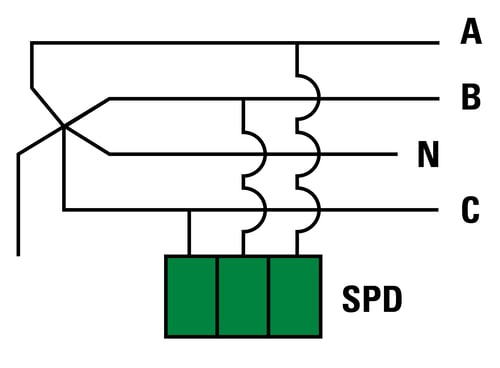Surge Protection Device Sizing for Industrial Control Panel Design
Panel design is an art. A well-designed panel strikes a balance of form, function, and cost. This can be difficult considering that an attempt to do so is an attempt at achieving the best of three worlds.
However, knowledge, is power. When a panel designer is well-informed, optimizing cost-effective protection into the panel design is easy.
Surge protection sizes can be a confusing subject. When a person uses a surge protection device (SPD) that is the incorrect size for their system, they waste money on an unnecessarily high level of surge protection (which is the best-case scenario), or they waste money on a device that will provide inadequate protection and also have a short lifespan.
This guide is tailored to panel designers who wish to strike the balance of form, function, and cost when choosing an industrial control panel’s SPD. It will teach panel designers how the correct SPD size is determined for each of the seven most common types of systems.
Surge Protection Device Overview
SPDs reduce surge voltages to a level that the power distribution system and the equipment that is connected to the system can handle. They protect the programmable logic controller in the equipment, the power supplies, the step-down transformer, variable-frequency drives, and the input/output devices.
SPDs are primarily rated by how much of a surge current magnitude they can handle, and how well they limit the voltage when conducting that surge current.
A survey of maintenance and facility managers by the National Electrical Manufacturers Association (NEMA) found that the reported cost of equipment damage caused by surges was not only expensive, but common. According to the survey:
- 50 % reported the cost of damage due to surges to be between $1,000 and $10,000
- 22 % reported the cost to be between $10,000 and $100,000
- 6 % reported the cost to be greater than $100,000
SPDs are important. NEMA says their survey’s results “underscore the importance of the role that SPDs can fill in preventing damage to and improving the reliability of electrical and safety systems.”
Why Are US Panel Designers Abandoning NEMA-Style for DIN-Rail Mountable SPDs?
The transition from NEMA- to DIN-mounted panel protection is great for U.S. panel builders. DIN-mounted panel protection has always been preferred over NEMA-style outside of the U.S. Recently, however, the U.S. finally began to make the switch.
Why? DIN-rail surge protection saves space. It is also less expensive and easier to work with than NEMA-style devices. This is ideal for panel designers because a DIN-rail style makes it easy to integrate surge protection into panel designs.
What is the correct way to determine which size of SPD to use in a system?
SPDs are not one-size-fits-all devices, nor do the size of their kA rating (the surge rating) go hand-in-hand with the size of the panel. In other words, do not select an SPD with a maximum kA rating just because the panel is large.
To determine which SPD should be used for the system, you must know the reference to the ground as well as the type of voltage that is present. Therefore, a panel designer should first determine the type of electrical system in use, and then calculate the voltage reference to ground. The formula to determine this will depend on the type of system.
For example, for a single-phase system (also called a split-phase system), the line-to-line voltage is divided by two. The result is the optimal amount of volts that the SPD should have for that system.
Determine the Reference to Ground
The reference to ground determines which product is best for the panel. There are seven major types of electrical systems that have a reference to ground:
- 3-phase, 3-wire systems
- 3-phase, 4-wire systems
- Ungrounded delta systems
- Impedence-grounded wye systems
- Resistance-grounded wye systems
- Single-phase (also known as split-phase) systems
- High-leg grounded delta systems
Once you know the type of electrical system, calculate the voltage reference to ground. The formula to determine this will depend on the type of system. Some of these systems share the same method: 3-phase, 3-wire and 3-phase, 4-wire systems; and impedence-grounded wye, resistance-grounded wye and resistance-grounded wye systems.
3-Phase, 4-Wire Systems and 3-Phase, 3-Wire Systems

FIGURE 1. A 3-phase, 4-wire wye system.
To find the reference to ground in a 3-phase, 4-wire system and in a 3-phase, 3-wire system, divide the line-to-line voltage by the square root of three.

A 3-phase, 3-wire system with a 480 L–L voltage has a 277-volt reference to ground. For this system, the best size SPD to use is one with an MCOV of 350 volts (which is the lowest available MCOV above 277 volts).
Information for sizing SPDs in every major type of electrical system, along with other surge protection-related information, is included in the full guide. To access the full guide, fill out the form below
